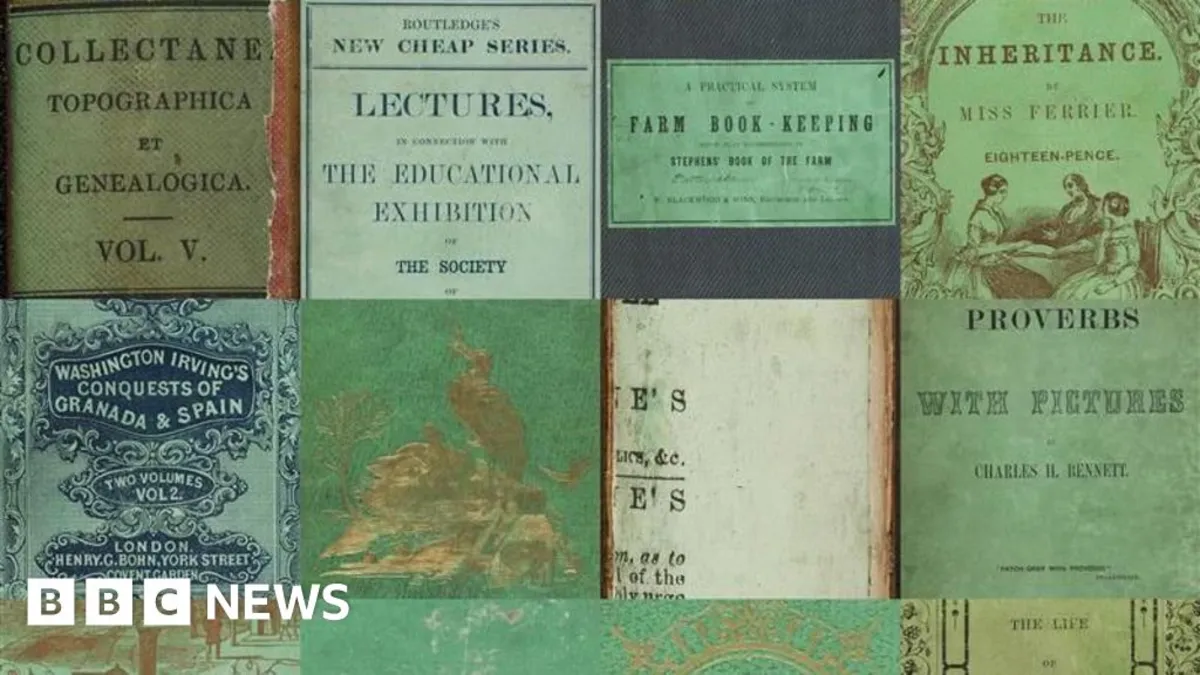
The Victorians had an undeniable fascination with the color green, particularly a vibrant shade of emerald that was created by combining copper and arsenic. This striking hue was widely used in various items, ranging from wallpaper to children's toys. According to Erica Kotze, a preservative conservator at the University of St Andrews, this color gained immense popularity throughout the 19th century due to its vibrancy and resistance to fading under light.
Many household items were colored using arsenic-based green pigments, and surprisingly, even confectionery was not exempt from this toxic mixture. The issue arises from the fact that the elements used to create these pigments are highly toxic, presenting ongoing health risks more than a century later. This toxicity is particularly concerning when it comes to old books, as Victorian bookbinders employed arsenic, mercury, and chrome to produce eye-catching covers.
Unfortunately, the survival of these books in archives around the world has led to a modern-day dilemma. Prolonged exposure to multiple green books can result in low-level arsenic poisoning. Long-term exposure poses severe health risks, such as skin changes, liver and kidney damage, and a reduction in red and white blood cells, potentially leading to anemia and an increased risk of infections.
In 2019, an initiative was launched in Delaware, known as the Poison Book Project, in collaboration between the Winterthur Museum and the state university. This project aimed to test books for toxicity and compile a list of potentially harmful titles. Notably, four books in the National Library of France were identified and immediately withdrawn due to their toxic nature.
Inspired by the Poison Book Project, Erica Kotze reached out to Dr. Pilar Gil, a biochemist working in Special Collections at the University of St Andrews. Dr. Gil took a methodical approach to survey the thousands of historic books in their collection. "The most important thing was to find a non-destructive, portable instrument that could tell us if it was a poisonous book or not," she explained.
Dr. Gil dismissed X-ray technology due to the fragile nature of the books and instead sought assistance from the geology department. They had a spectrometer—a device that measures the distribution of different wavelengths of light, typically used for detecting minerals in rocks. "Minerals and pigments are very similar," Dr. Gil noted, leading her to borrow the instrument to search for emerald green in books. After testing hundreds of books, she experienced a breakthrough moment. "I realized there was a distinctive pattern to the toxic ones," she recalled.
The next step involved consulting with the physics department to develop a prototype of their own. Dr. Graham Bruce, senior research laboratory manager, explained the workings of the new device: "It shines light on the book and measures the amount of light that reflects back." The device utilizes both visible green light and invisible infrared light. The green light indicates no arsenic fragments, while red light signals the presence of pigments.
This new testing device is smaller and more cost-effective than traditional spectrometers. It has already been used to survey thousands of books in the St Andrews collections, as well as the National Library of Scotland. The team hopes to share their design with institutions globally. "We're fortunate to have expensive equipment as a large institution to test 19th-century potentially toxic books," stated Dr. Jessica Burge, deputy director of library and museums at the University of St Andrews. "However, other institutions with significant collections may lack these resources, so we aimed to create something affordable and user-friendly."
The ongoing issue of toxic books is not expected to diminish over time; in fact, as these books age and deteriorate, their risks may increase. Identifying toxic books allows for safe storage and controlled access, enabling readers to enjoy them with precautions such as wearing gloves. "It will continue to be a live issue," Dr. Burge affirmed. "Currently, the biggest concern for institutions is that any book with a green cover from the 19th century is being restricted due to uncertainty, which contradicts our mission as libraries and museums. We aim to facilitate access to collections rather than limit their use."